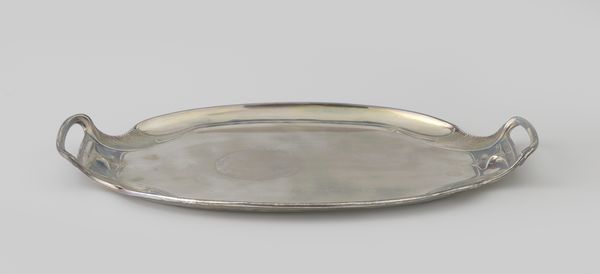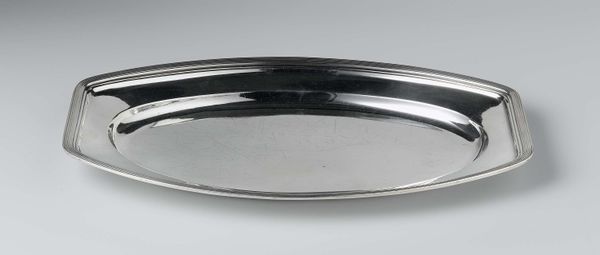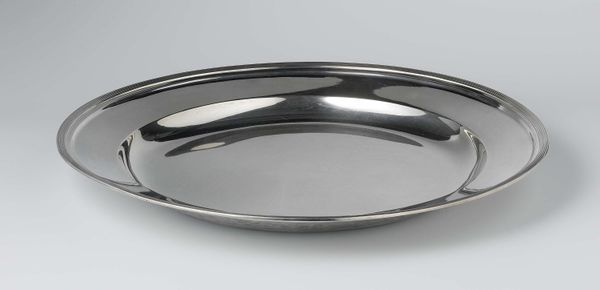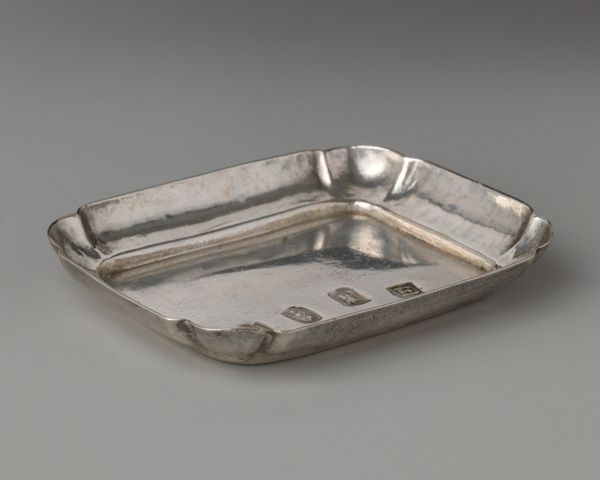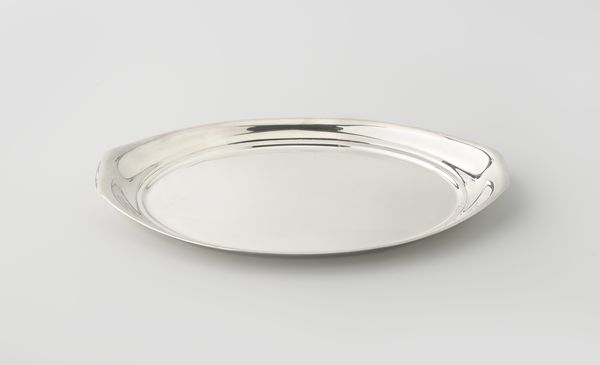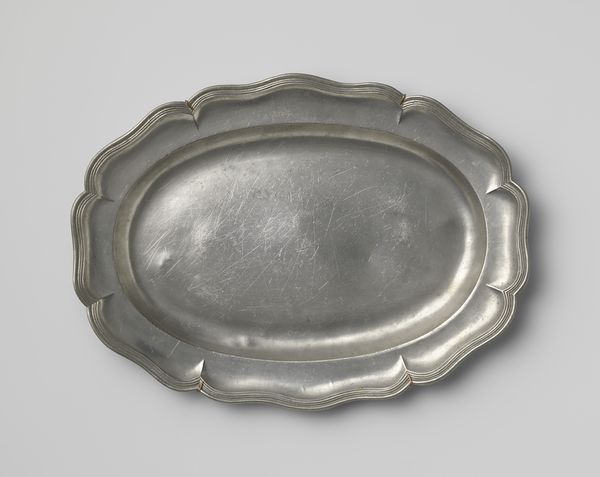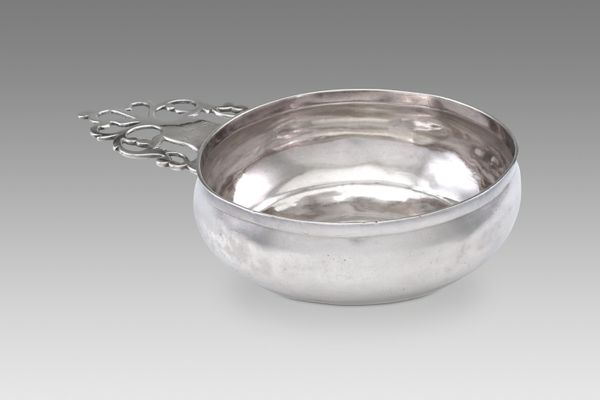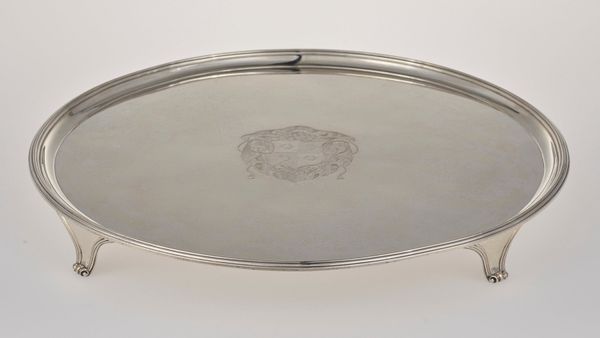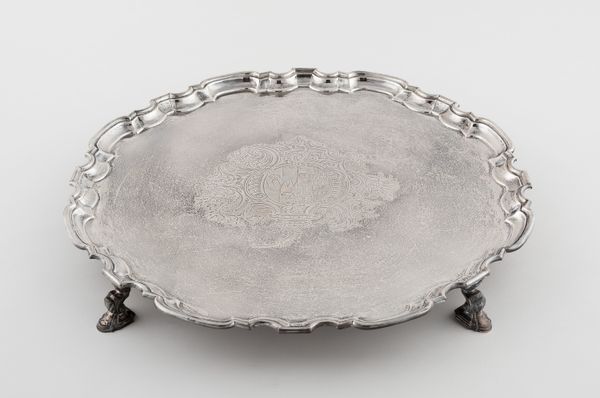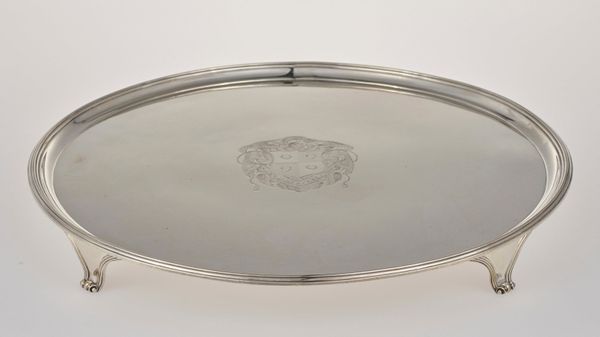
silver, metal, sculpture
#
silver
#
metal
#
sculpture
#
decorative-art
Dimensions: height 7.4 cm, width 72.0 cm, depth 45.0 cm
Copyright: Rijks Museum: Open Domain
This silver tray with its pointed oval shape and handles was made by Hendrik Smits, who lived from 1772 to 1841. It embodies a time when the culture of domesticity began to shape the production of luxury goods. During the late 18th and early 19th centuries, the burgeoning middle class in the Netherlands aspired to emulate the lifestyles of the aristocracy and display their wealth through refined household objects. Silverware became a symbolic representation of social status. The tray reflects a shift toward more intimate social gatherings and displays of hospitality. The design itself, with its emphasis on functionality and understated elegance, mirrors the values of a society seeking to balance tradition and progress. By studying probate inventories, household manuals, and trade records, we can better understand the market for luxury goods and the aspirations of those who acquired them. The silver tray is a testament to the evolving social landscape of the Netherlands and the ways in which material culture can reflect broader historical trends.
Comments
No comments
Be the first to comment and join the conversation on the ultimate creative platform.
